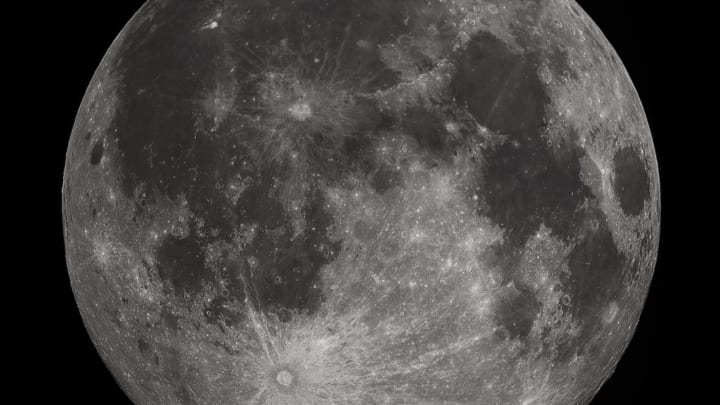Study Suggests There's Water Beneath the Moon's Surface

Astronauts may not need to go far to find water outside Earth. As CNN reports, Brown University scientists Ralph E. Milliken and Shuai Li suspect there are significant amounts of water churning within the Moon’s interior.
Their findings, published in the journal Nature Geoscience, lean on the discovery of glass beads encased in the Moon’s volcanic rock deposits. As recently as 100 million years ago, the Earth’s moon was a hotbed of volcanic activity. Evidence of that volatile time can still be found in the ancient ash and volcanic rock that’s scattered across the surface.
Using satellite imagery, the researchers identified tiny water droplets preserved inside glass beads that formed in the volcanic deposits. While water makes up a small fraction of each bead, its presence suggests there’s significantly more of it making up the Moon’s mantle.
Milliken and Li aren't the first scientists to notice water in lunar rocks. In 2008, volcanic materials collected from the Moon during the Apollo missions of 1971 and 1972 were revealed to contain the same water-flecked glass beads that the Brown scientists made the basis of their recent study. They took their research further by analyzing images captured across the face of the Moon and quickly saw the Apollo rocks represented a larger trend. "The distribution of these water-rich deposits is the key thing," Milliken said in a press statement. "They're spread across the surface, which tells us that the water found in the Apollo samples isn't a one-off. Lunar pyroclastics seem to be universally water-rich, which suggests the same may be true of the mantle."
The study challenges what we know about the Moon's formation, which scientists think occurred when a planet-sized object slammed into the Earth 4.5 billion years ago. "The growing evidence for water inside the Moon suggests that water did somehow survive, or that it was brought in shortly after the impact by asteroids or comets before the Moon had completely solidified," Li said. "The exact origin of water in the lunar interior is still a big question."
The findings also hold exciting possibilities for the future of space travel. NASA scientists have already considered turning the Moon into a water station for astronauts on their way to Mars. If water on the celestial body is really as abundant as the evidence may suggest, figuring out how to access that resource will definitely be on NASA's agenda.
[h/t CNN]